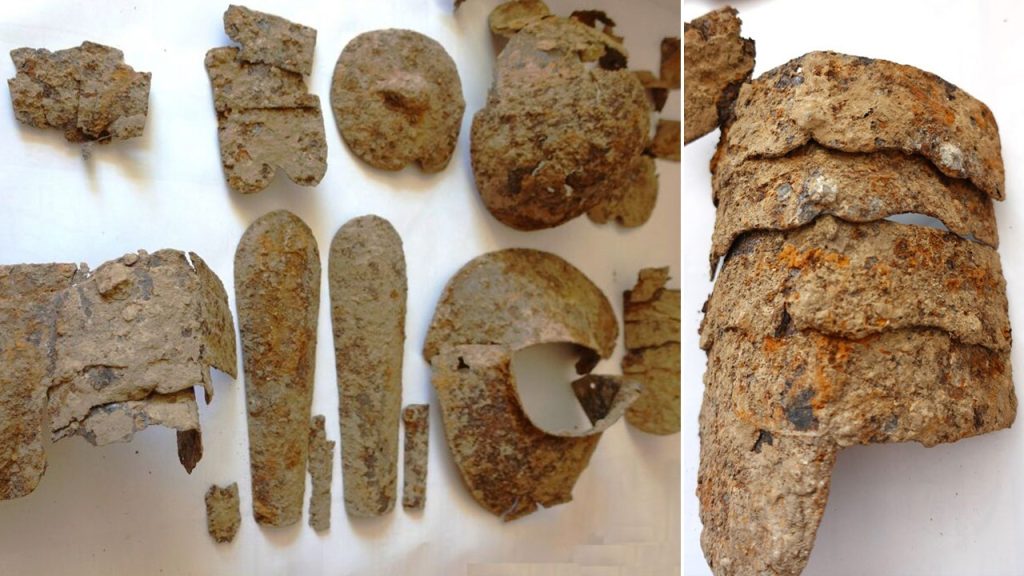A metal detectorist, Patryk Chmielewski, also known as Profesor Detektorysta, made an exciting discovery in Mikułowice, Poland last month. While filming himself roaming a field with a metal detector, Chmielewski’s device began pinging, leading him to uncover several pieces of metal buried 60 centimeters deep. The Ministry of Science and Higher Education later confirmed the discovery in a Polish news release, announcing that the artifacts likely belonged to the Polish hussars, a cavalry unit in the Polish–Lithuanian Commonwealth from the 16th to the 18th century.
Archaeologists believe that the metal pieces uncovered by Chmielewski date back to the 17th century, based on the shape of the helmet found at the site. The absence of decorative ornaments on the armor suggests that it may have been made in a local workshop, adding to the mystery of where exactly the artifacts originated. The armor is said to be incomplete, missing components such as the breastplate, backplate, and one of the shoulder pads. Despite this, the discovery offers valuable insights into the military history of the region in the 17th century.
After undergoing conservation work, the artifacts will be displayed at the Sandomierz Castle in Poland. This medieval structure currently serves as a museum, making it a fitting location to showcase the newly discovered military gear. The castle’s historical significance and role as a tourist attraction will provide visitors with an opportunity to learn more about the armor and its connection to the Polish hussars. The find adds to the rich tapestry of artifacts that have been uncovered in Poland, highlighting the country’s diverse cultural heritage.
The discovery of the 17th-century military artifacts adds to the growing body of archaeological finds in Poland. The armor, believed to have belonged to the Polish hussars, sheds light on the military history of the region during the early modern period. The unique design of the helmet and the absence of ornamental decorations suggest that the armor may have been produced locally, raising questions about the craftsmanship and techniques used to create such pieces. The artifacts will undergo further study and conservation before being publicly displayed at the Sandomierz Castle.
The announcement of the discovery of the military artifacts by Chmielewski has generated widespread interest and excitement among archaeologists and historians in Poland. The find provides a valuable opportunity to study and analyze the military equipment used by the Polish hussars in the 17th century, offering insights into their tactics, strategies, and historical significance. The artifacts will be curated and displayed at the Sandomierz Castle, allowing visitors to learn more about the rich military history of Poland and the role of the Polish hussars in shaping the country’s identity.
The uncovering of the 17th-century battle gear by Chmielewski highlights the importance of metal detecting as a tool for discovering historical artifacts. The use of metal detectors by enthusiasts such as Chmielewski can lead to unexpected and significant finds that contribute to our understanding of the past. The collaboration between metal detectorists, archaeologists, and museum curators plays a crucial role in preserving and interpreting these discoveries, ensuring that they are properly documented and shared with the public. The discovery in Mikułowice serves as a reminder of the hidden treasures that lie beneath the surface, waiting to be uncovered and explored.


